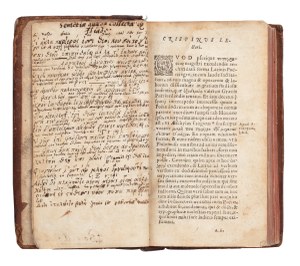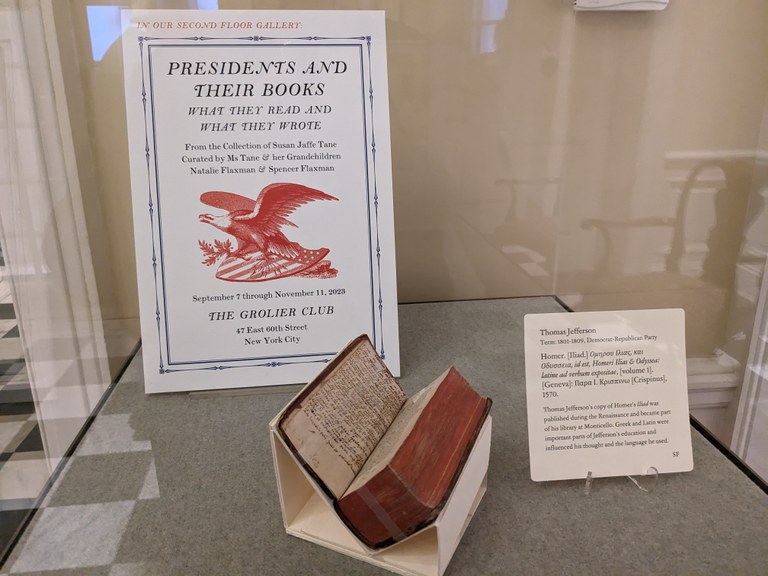"Presidents And Their Books" exhibition highlights the influence of the antiquity on American history
Earlier this year, I assisted in the design and installation of an exhibition that, at first glance, has little to do with antiquity. “Presidents and Their Books: What They Read and What They Wrote,” now on display in the Grolier Club’s second floor gallery, features books from the collection of Grolier Club member Susan Jaffe Tane that were either previously owned or inscribed by Presidents of the United States. With representative books from every person to hold the office of President, the exhibition presents the broad sweep of American history, as embodied by the books read and written by the residents of the White House. The main subject of the exhibition is modern American history– but a closer look at some of the individual pieces on display reveals the influence of ancient history on modern America.
 Thomas Jefferson's copy of Homer's Iliad. (Courtesy of Susan Jaffe Tane)
Thomas Jefferson's copy of Homer's Iliad. (Courtesy of Susan Jaffe Tane)
Greeting visitors at the Club’s main entrance is Thomas Jefferson’s personal copy of Homer’s Iliad, including extensive handwritten annotations– many of them in Greek. Writing of the influence of Homer on Jefferson’s own writing, Emily Townsend Vermeule (whose Classical library forms a core component of the ISAW Library’s collection) writes: “He believed that language as it was capable of expressing ideas was a major instrument for changing history and men’s imaginings about the future… He instinctively felt that Homeric language was as rich as English might aspire to become.”
The gallery contains further books with connections to the ancient past, including a copy of Xenophon’s Anabasis previously owned by Lucretia Garfield (née Rudolph), wife and First Lady of James Garfield, the 20th President. The couple attended two schools together– first Geauga Seminary in Chester Township, Ohio, and then the Western Reserve Eclectic Institute in Hiram, Ohio. At these radically progressive co-educational institutions the pair undertook a course of study in the Classics, and when their Greek teacher at Western Reserve fell ill in 1851, the future president stepped in to lead the class. Lucretia’s copy of Xenophon, signed with her maiden name, likely dates to this period of their coeducational courtship.
Also on display is 13th president Millard Fillmore’s copy of Thomas Maurice’s Indian Antiquities… Vol. IV. Though the title refers to India alone, Maurice’s work also covered Egypt and the Near East. This volume concerns “the Hebrew Trinity and Oriental Triads of Deity,” offering a detailed description of Hebrew, Zoroastrian, and Hermetic religious iconography. As a member of the conspiracist and xenophobic “Know Nothing Party,” Fillmore was a major figure in the anti-Masonic movement of the mid-19th century. His interest in Maurice’s work on eastern imagery was almost certainly connected to his opposition to secret societies like the Freemasons, which based their own iconography on Orientalist conceptions of India, Egypt, and the Near East.
“Presidents and Their Books” is on display at the Grolier Club (47 East 60th St.) through November 11. Detailed photographs of the exhibition are available in the Grolier’s Flickr account.
